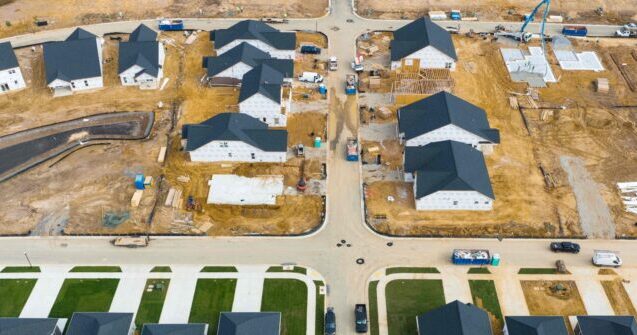Sales of new single-family homes slipped in July but still beat expectations, as lower prices and builder incentives helped offset high borrowing costs. The Commerce Department reported a seasonally adjusted annual rate of 652,000, down 0.6 percent from June and 8.2 percent from a year earlier. June’s pace was 656,000.
Economists had expected a 630,000 rate, according to surveys by Bloomberg.
Inventories remain elevated. There were 499,000 new homes for sale at July’s end, equal to 9.2 months’ supply at the current sales pace—both little changed from June. A normal supply is considered to be in the range of four to six months. According to Calculated Risk, the all-time high was 12.1 months in Januyarty 2009 and the record low was 3.3 months in August 2020.
The median sales price was $403,800, down nearly 6 percent from July 2024. The average price was $487,300.
Affordability continues to weigh on demand. The National Association of Home Builders’ Cost of Housing Index shows a typical family earning the national median income would need 36 percent of income to finance a median-priced new home. fFor existing homes the share is 37 percent. For low-income families (half the median income), those shares are 71 percent and 74 percent, respectively.
To sustain sales, builders have leaned more on discounts and financing perks. In August, 66 percent of builders reported offering sales incentives—the highest share in the post-pandemic period—while roughly a third cut prices, NAHB said.
“While the housing affordability crisis persists, builders have been working diligently to make new homes more affordable by reducing square footage, lowering prices and offering a host of buyer incentives,” said NAHB Chairman Buddy Hughes, a home builder and developer from Lexington, N.C. “The Cost of Housing Index shows these efforts have moved the needle in the right direction, but much more needs to be done on the policy front to reduce regulatory burdens, address construction labor shortages and ease building material supply chains to allow builders to increase the nation’s housing supply.”
Mortgage rates have edged lower in recent weeks, with the 30-year average hovering around the mid-6s in mid-August, according to Freddie Mac’s Primary Mortgage Market Survey.
New-home sales are volatile and subject to significant revisions. Preliminary seasonally adjusted totals are typically revised by about 3.2 percent.
Read the full article here


